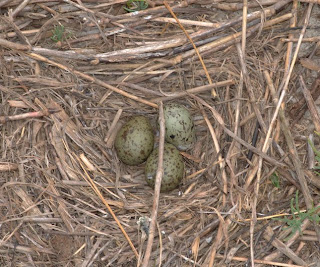From the SC DNR webpage:
Deveaux Bank Seabird Sanctuary was established to protect significant nesting habitat of sea and shorebirds. Deveaux Bank Seabird Sanctuary encompasses approximately 215 acres at the mouth of the North Edisto River in Charleston County. The size of this sanctuary varies and may sometimes disappear entirely. Deveaux Bank is an estuarine island that was first documented in 1921. It has been documented as a seabird rookery since the 1930s. Nesting was temporarily halted during World War II due to the island's use as a bombing range. The island is part of a dynamic system; it completely subsided in 1980 due to erosion from Hurricane David. It has slowly reemerged and seabirds began nesting on the island again in 1983.
The Seabird Sanctuaries are sandspit islands formed by deposits from their associated river systems. The islands are dynamic and shift in position and structure due to erosion and deposition of sand.
Deveaux Bank supports colonies of nesting waterbirds because of its isolated nature and lack of mammalian predators. Although all species may not nest on the island each year, examples of species that have used the island include: brown pelican, least tern, royal tern, black skimmer, gull-billed tern, sandwich tern, common tern, laughing gull, Wilson's plover, American oystercatcher, willet, great egret, snowy egret, tricolored heron and ibis. Besides providing nesting habitat, the sanctuary provides winter loafing and feeding areas for numerous species, including the federally-threatened piping plover.
The colonial nesting behavior of these birds makes them very susceptible to disturbance. Birds are densely packed into breeding sites during the nesting season, rendering the entire colony susceptible to disruption or destruction. Therefore, the sanctuary is open only below the high tide line except in the designated recreation area. Dogs are prohibited year round.
 We arrived by boat from the Rockville boat landing and walked to the ocean side of the bank. We then moved in a line through the Brown Pelican nesting site counting all of the nests to our right as far as the next person in the line. Not only did we need to pay close attention to the the nests in our zone, but we needed to watch for smaller ground nest like those of the Laughing Gull.
We arrived by boat from the Rockville boat landing and walked to the ocean side of the bank. We then moved in a line through the Brown Pelican nesting site counting all of the nests to our right as far as the next person in the line. Not only did we need to pay close attention to the the nests in our zone, but we needed to watch for smaller ground nest like those of the Laughing Gull.Although not eager to do so, the pelicans flushed from their nests before we walked carefully through the site. Not waiting for the large birds to depart, one runs the risk of getting hit by the bird as it struggles for lift and altitude, having the birds panic and injure chicks or damage eggs, and/or being immediately down range of jettisoned waste.
Sometimes, pelicans disgorged their load of fish before flying off. Laughing Gulls quickly moved in for the free meal.
The rookery is a noisy and dangerous place. Eggs or chicks left unattended are easy targets for the abundant Laughing Gulls. Therefore, even if a dog or curious human doesn't step on any eggs or capture any birds, the disturbance in the rookery causes eggs and chicks to be exposed to predators and the elements. The Snowy Egret chicks shown below have grown to a sufficient size that they are not likely to be attacked by gulls.
Images by Mark Musselman












No comments:
Post a Comment